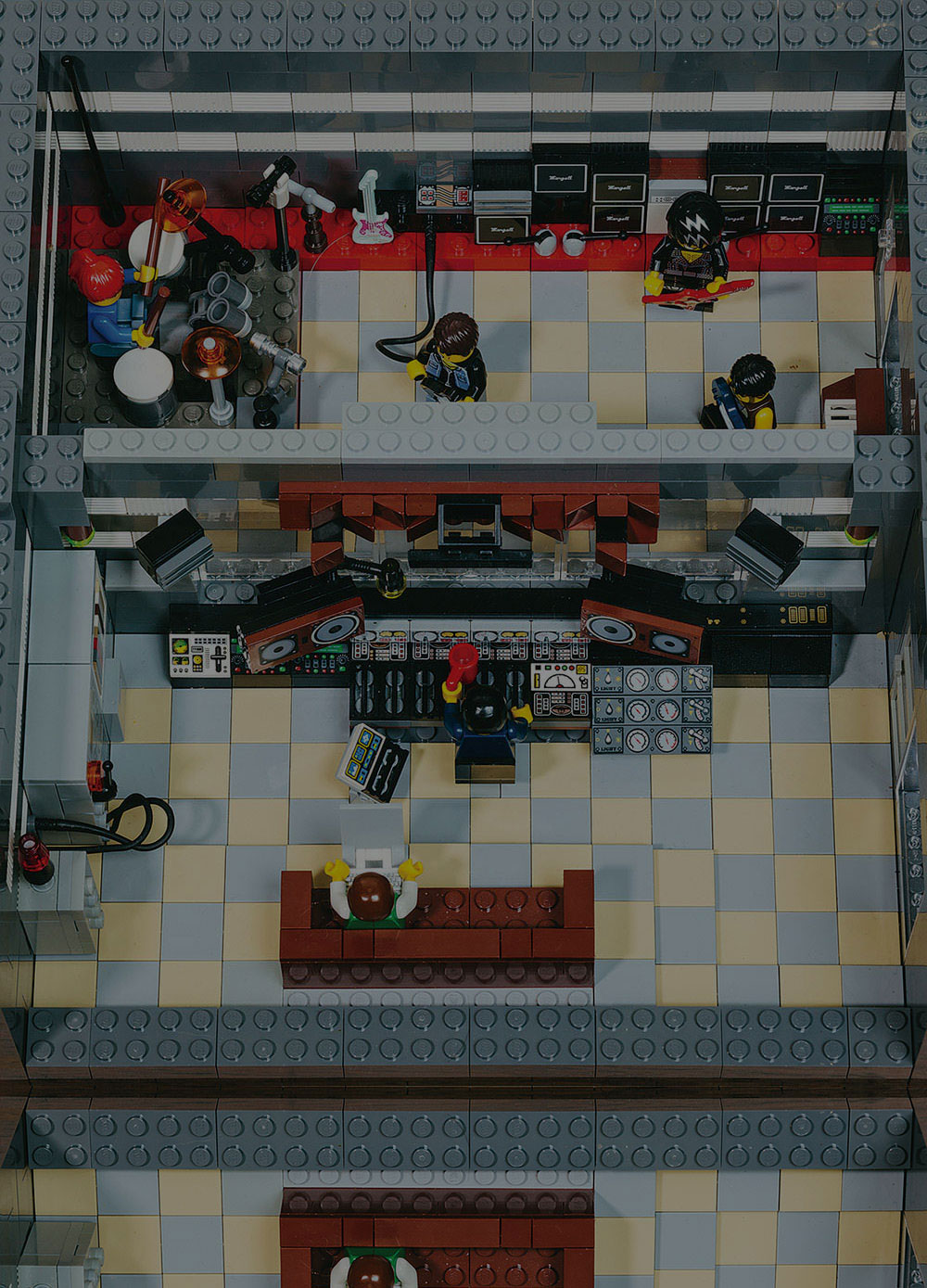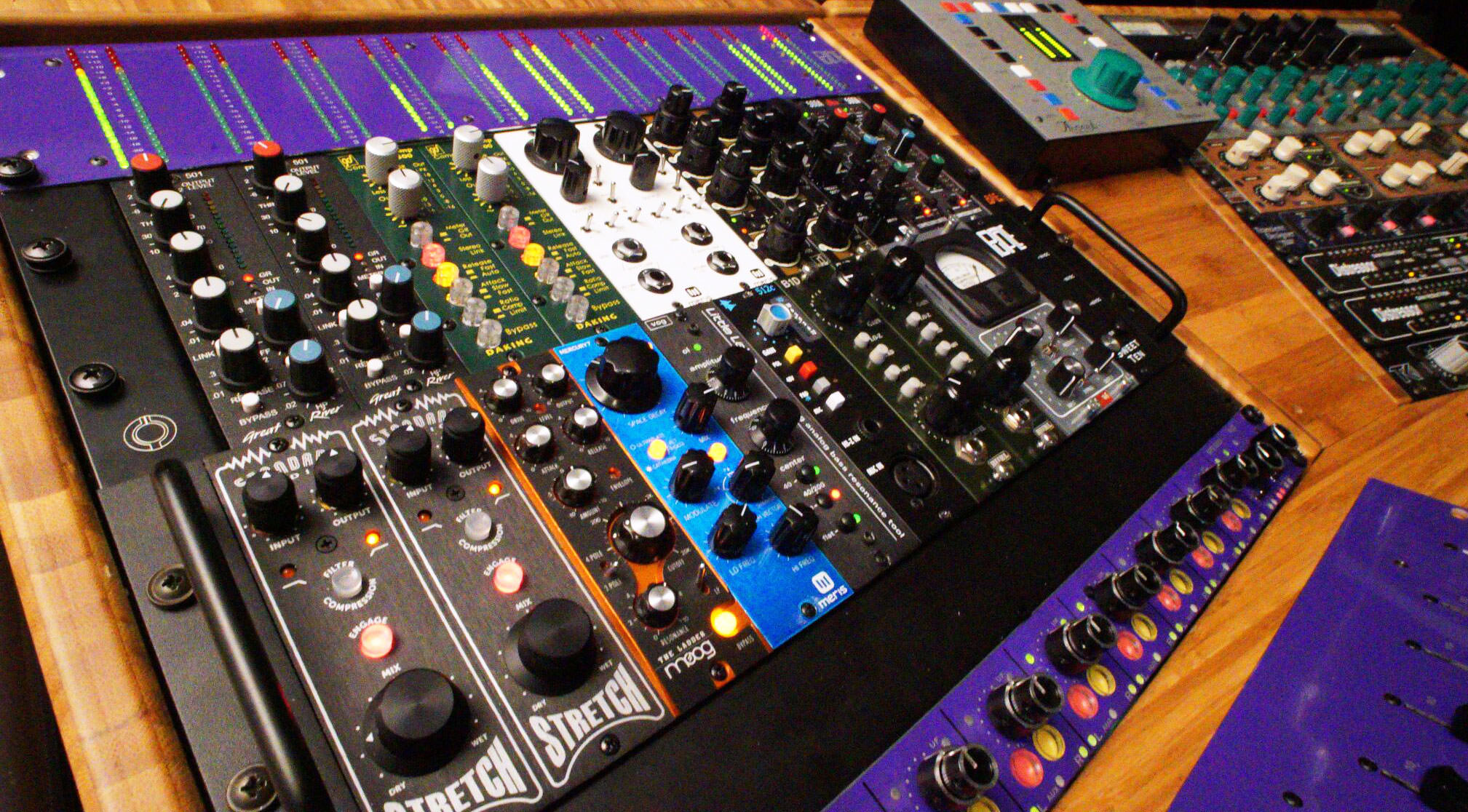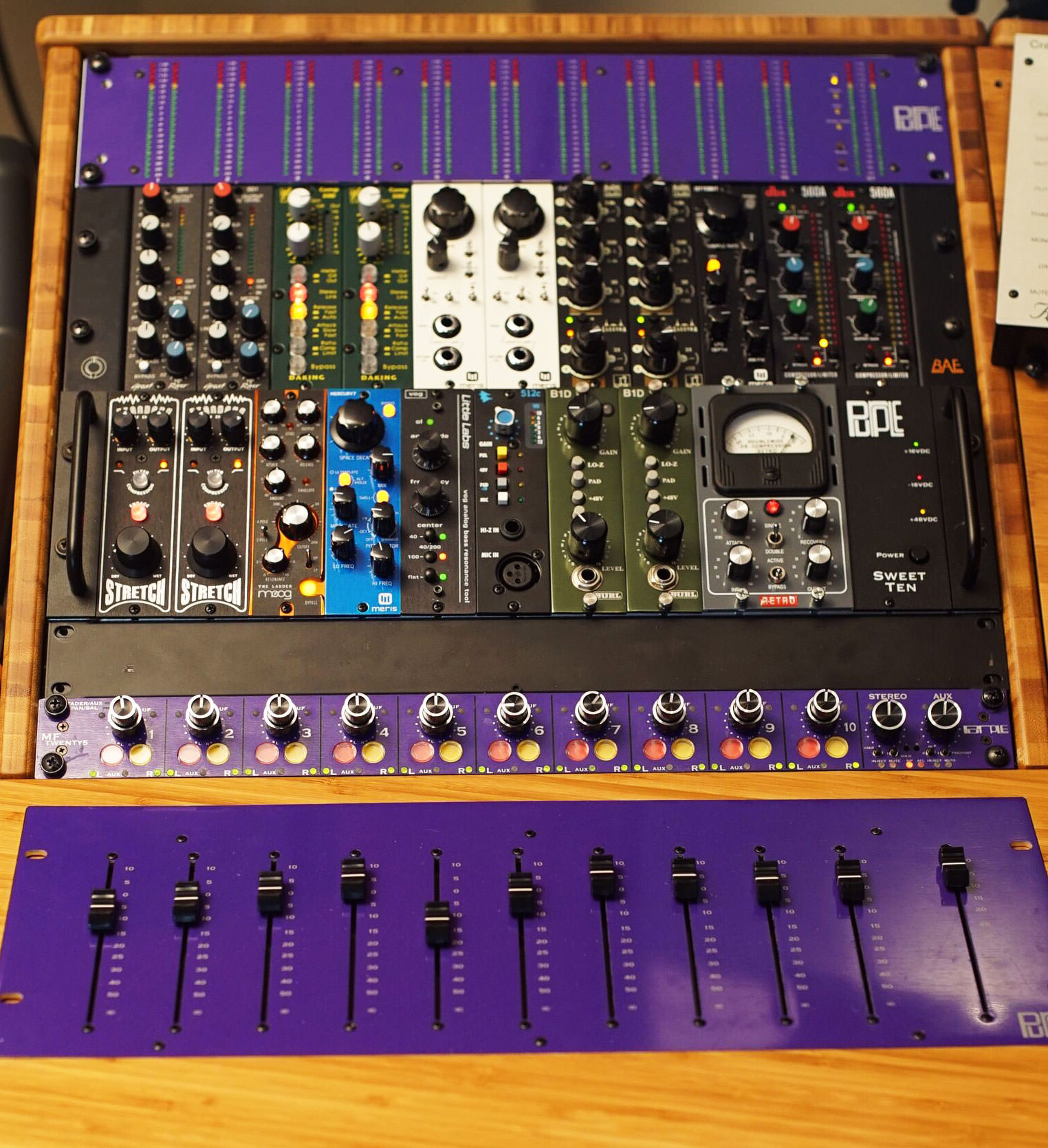Not long ago, I moved into a new space to mix. It's great. I got it sounding good with some acoustic treatment, and it has a stellar view of the water here in Seattle. It is an inspiring place to be, and because of that, I have been on a mission to make it a viable place to work (these things take time!), and sound-wise, it does.
One thing that has been missing is good ergonomics. I do not find myself comfortable after long hours of mixing. Due to some skateboarding accidents and general banging up of the body over the years, after long sessions, I find myself with pain in my elbows, shoulders, and wrists. A new chair, workspace height adjustments, and similar tweaks yielded only slightly better results. It is worth noting that I have, over my time as a studio owner, gone through many variations of gear/process — some early setups driven by cost and later by the need for a better working solution — from in-the-box mixing with plug-ins; to mixing on a console and printing back to Pro Tools using outboard gear; to a control surface and a summing box, with outboard gear and plug-ins; to where I am now, which is a little of all of the above. I like the flexibility and tone, but find that when I sit behind a traditional console, I mix differently. I listen differently. I like having controls right in front of me, and most importantly, I find that I am more physically comfortable while I work. There is always some degree of mousing around when a DAW is involved, but I try to minimize it and turn knobs and push buttons when I can.
In any setup, there are a handful of considerations. Sound quality — it has to sound good. Flexibility — I want to be able to (within reason) recall mixes quickly and integrate both outboard gear and plug-ins. Ergonomics — it has to feel good to sit there all day, and it needs to facilitate workflow and foster creativity. Cost — nothing good comes cheap (most of the time anyway), but I also do not want to drain the kids' college accounts by way of my quest. Maintenance — I am the in-house tech whenever possible, and I'd prefer to never use an outside tech, other than the manufacturers that I send things to, for repairs, mods, or updates.
In my (what seems to be an endless) search for a solution, I came across the Purple Audio MFTwenty5. It is a modular console system that starts with a 1RU-height rackmount 10×2 analog mixer. To that, you can add MF-series faders and meters — and 500-series modules and frames of your choice. In essence, it's an expandable system that is designed to work as a compact 500-series console or sidecar, which you can use for tracking, mixing, or both, depending on how you configure it.
The heart of the system is the aforementioned MFTwenty5 10×2 mixer. It has ten input channels that sum to a stereo L/R bus. Each of the ten inputs is mono/stereo selectable, with backlit solo and mute buttons, as well as concentric pots for level and pan/balance. When the MFTwenty5 is used standalone, the level pot is the fader level for its channel. When the optional MF Fader Pack is added to the system, the level knob becomes the channel's mono aux send. Since the solo bus is stereo, the total output-channel count is five (L/R, stereo solo, mono aux). In addition, each channel has multicolor LEDs indicating signal level, aux mode (pre-fader, post-fader, or mute), and input mode (left-only, right-only, or stereo).
Squeezed into the far right of the MFTwenty5's faceplate is the master section, and it too is packed with a ton of functionality. There are two master level pots, one for L/R and one for the aux send, each with an integrated pushbutton mute, as well as associated LED indicators for signal level, insert, and mute. Two additional LED indicators display the solo modes (SIP, AFL), while four multifunction buttons set the solo and aux modes, as well as allow storage and recall of three user configurations. As you can imagine, changing some of the settings requires pushing two buttons at once (one channel-related button plus one master-section button). And finally, there are two trim pots behind holes for tweaking the stereo solo level.
Inside, the signal paths are 100% analog throughout, with a total of 55 discrete op-amps and a transformer-balanced L/R output. Meanwhile, digital logic handles the multifunction controls. The inputs, bus inserts, and meter sends are on DB25 connectors, while the output buses are on TRS jacks. The I/O for the MF Fader Pack is on DB37 connectors. Up to five MFTwenty5 units can be cascaded and networked together for a total of 50 stereo input channels.
Interestingly, the L/R outputs are paralleled on one of the DB25s, and the inputs are also multed on DB25s. This opens up a lot of possibilities. For example, you could feed the outputs of your mic preamps to the MFTwenty5 to create a zero-latency mix during tracking, while simultaneously feeding your DAW through the MFTwenty5's mults. Or, you could set up parallel-processing signal paths with the mults during mixing.
The MF Fader Pack is a set of linear faders in a rackmount chassis, available in multiple configurations. My unit has ten stereo channel faders and one stereo master. The MF Meter Bridge is a set of 21-segment LED meters, also in a rackmount chassis and configured for ten stereo channels and one stereo master. A pushbutton chooses between VU, peak, over, and peak/over metering modes, while a second button clears the over indicators.
Before I even racked up the MFTwenty5 as I eventually intended in a console format, I used DB25 snakes to route signals from my patchbay to the MFTwenty5 for testing. The sound of the unit was very pleasing — big and open, with plenty of punchy low-end focus, as well as extension on the top. It was nice to have mute, solo, and pan functionality right on the box itself, which certainly helped it seem more like a console than a summing amp. In a realm of "known" sounding consoles, I would say that the Purple tilts more towards an API-ish sound than that of a Neve. It has a forward clarity and immediacy that I liked and felt hi-fi, without being the least bit boring.
Control-wise, I immediately liked the feel of the knobs and buttons, and I felt that the panning was accurate. The master-section buttons, on the other hand, seemed quite small, and the text for identifying them tiny. That said, I have big fingers and was still able to access the functions with little problem. More importantly, I was willing to forgo the challenge of operating densely packed controls, because the prospect of a compact console with all of my go-to processing right in front of me — as opposed to spread across racks elsewhere in the room — was very appealing.
I, like many readers (I suspect), have pieces of gear that I prefer for processing specific elements of a mix. Certain EQs and compressors for guitars, bass, and vocals, etc. I like tracking on a console with a consistent preamp sound, but when it comes time to mix, I often prefer to get the spice rack and paintbox out for some extra flavor and color.
The MFTwenty5 system and its recommended desk (more on that below) provide for a compact setup that puts a generous amount of your preferred outboard gear right at your fingertips. It would arguably look cooler when racked up with a full complement of Purple Audio 500-series modules for consistency, but I loaded up with my own collection of 500-series gear, and it is still a real beauty.
One aspect of ergonomics is having the gear in the proper furniture. In all of the MFTwenty5 literature, the system is shown in an aesthetically pleasing desk from a company called JamRacks <www.jamracks.com>. I reached out to owner Jeff Baker, and he walked me through his products, construction methods, and materials — and how each piece is handmade in New Jersey. The Double Sidecar V-Desk, which is essentially two sidecar units connected together in a "V" shape, is what interested me most. Jeff said he was inspired by the look of the ‘70s Helios consoles when making this design. To experience the MFTwenty5 as intended, I asked Jeff to send me a V-Desk. It fits the bill in terms of form, function, number of rack spaces, cutouts for faders, and attractive profile.
The JamRacks V-Desk arrived in three flat-packed boxes. Opening up the boxes, I had the same feeling I get when I embark on an IKEA project, especially because the hardware looked very familiar. But unlike the furniture from the big Swedish brand, the JamRacks desk utilizes eco-friendly, formaldehyde-free bamboo — no MDF or veneers in sight. Following the PDF instructions that I was emailed, assembly was actually a pretty painless endeavor. All of the pieces were milled and finished perfectly, and the unit went together seamlessly. I inadvertently flipped a couple of pieces for one another, and I had to undo some of my work, so I suggested to Jeff that he label the pieces with stickers for us dummies who can't see right from left. The assembled desk is amazingly light — but incredibly solid — and I appreciate that venting and cable management have been thoughtfully incorporated into the design. There is no comparison in terms of quality, stability, and strength to the typical particle-board solutions, and to my knowledge, the JamRacks products are comparable in price, if not more affordable. Did I mention that JamRacks is a small shop, and you can ring the guy who designs and builds the stuff?
When fully loaded, the MFTwenty5 system in the Double Sidecar V-Desk takes on the appearance of a nice, tight, mastering console. My converters, spring reverbs, and secondary compressors live off to the side in a more traditional outboard setting, but the things I use religiously are all in the V-Desk — 34 channels worth — right there in front of me.
Outside of the occasional overdub, I do not track much in my new space, so I set up the MFTwenty5 almost exclusively for mixing stems. On the left side of the V-Desk, I have the MFTwenty5, MF Fader Pack, MF Meter Bridge, and two 500-series frames filled with my most-used modules. On the right side, I have my "gets used on every mix" rackmount gear. This includes a couple mix-bus compressors, my mix-bus EQ, and other dynamics processors that get frequent use. I love having this stuff right in front of me while I make adjustments, instead of in a rack behind me or down to my side.
If you are using two ten-space 500-series frames stacked one above the other, you can arrange your modules to line up vertically with the MF meters and faders (e.g., with left-channel modules on top and right-channel ones below). Because I have eleven and ten–space frames, they didn't line up exactly, so I just racked my stereo pairs of modules side-by-side. I have everything on a patchbay, so I can patch and modify signal chains easily and at will.
This setup's attractiveness lies in the combination of high-quality sonics, good ergonomics, and the ability to make adjustments to the audio on analog hardware units without leaving the sweet spot! Furthermore, being able to grow the system over time is a nice benefit to those looking to start with great summing and add more 500-series modules, faders, or metering over time to build a more capable rig.
The MFTwenty5 is a new product, and for all intents and purposes, it is handmade to order by Purple Audio owner Andrew Roberts [Tape Op #117]. While setting up my system, I ran into a few problems, including some of the internal components having unseated themselves during shipping due to rough handling, which manifested as glitches in the master section's digital control. That said, Andrew was available to troubleshoot and walk me through correction of the issues, or rebuild and send replacement parts as needed. He also explained that the packaging has been modified to address the shipping-related problems. It was also helpful to talk through some of the rationale behind the MFTwenty5 design, and how to use the system to its full potential. (I'm sure I am currently not, but hope to soon!)
In a world where many are ditching their traditional consoles for in-the-box or smaller-format mixing and tracking solutions, the Purple Audio MFTwenty5 provides a great solution that lies at the intersection of analog and digital realms, with easily integrated faders and meters. For some, this setup may be too much, and for others, not enough; but for me, it hit a sweet spot of high-quality sonics, seamless integration of outboard gear, easy recall, and — in the JamRacks desk — great ergonomics.






_disp_horizontal_bw.jpg)